

ENGLISH
The bamboo locust (Ceracris kiangsu) is a common leaf-eating insect distributed in tropical rainforests. It was not regarded as a significant economic problem previously because it only occurred in small populations, despite consuming the economically important bamboo forests. However, in 2020 the C. kiangsu population dramatically increased in Lao PDR and crossed the border to Yunnan Province plundering or destroying a total of 8,000 hectares of local bamboo forests and crops. In order to help relevant APFNet member economies better understand the habits of this pest and implement timely control measures, the Yunnan Academy of Forestry and Grassland, current Chair of the APFNet mechanism “Sino–ASEAN Network of Forestry Research Institutes” (SANFRI), compiled a set of Q&A questions that were answered by its experts and provided a thorough introduction about the locust. In the Q&A, answers, such as the possible reason for the outbreak, what the locusts eat and reproduction habits are given setting out six effective ways to control the locust.
-------------------------------------------------------------------------------
Q&A about the recent bamboo locust plague
In order help relevant personnel and the public understand the bamboo locust (Ceracris kiangsu) plague and learn effective control measures, the Yunnan Forestry and Grassland Pest Control and Quarantine Bureau and the Yunnan Academy of Forestry and Grassland (YAFG) asked experts to compile a number of questions and answers, which will be expanded upon as new insights emerge.
Contributed by: Chen Peng, Yan Zhengliang, and others at the Forest Protection Institute, Yunnan Academy of Forestry and Grassland.
Guided by: Chen Kai, Zhang Jiasheng and Ze Sangzi of the Yunnan Forestry and Grassland Pest Control and Quarantine Bureau.
Edited by: Anna Finke from APFNet and Zhang Jinfeng from the Yunnan Academy of Forestry and Grassland.
Ceracris kiangsu is widely distributed in the southern provinces of China and neighbouring economies. This bamboo locust mainly feeds on bamboo leaves and sometimes on Chinese banana or tiger grass. Corn and rice can become the victim of this insect pest when other food sources are lacking. Bamboo locusts can eat up all bamboo leaves when the population reaches a certain density. It is one of the main pests of bamboo forests.
This year a locust plague broke out along the Pu’er border area. The hospitable Yunnan people were very puzzled. What kind of guests were they? What were they doing here? How should they be treated?
The famous Chinese general Sun Tzu once said: “Know your enemy and know yourself, and you will never be defeated in battles.” Thus, for this pest, the reader shall be sufficiently prepared for battle.
What is the bamboo locust?
Ceracris kiangsu Tsai belongs to the genus Ceracris (Family: Arcypteridae; Order: Orthoptera) and is commonly known as the bamboo locust, a type of locust occurring in China. An alternative Latin name is Rammeacris kiangsu Tsai.
More simply put, Ceracris kiangsu is similar to the grasshopper. It is a relative of many grasshoppers. Common grasshoppers prefer to eat weeds and do less harm to trees and crops, so we think they are somewhat harmless.
This time the Ceracris kiangsu population has, however, reproduced at unpreceded levels, severely harming bamboo forests and even crops. Thus, effective control measures have to be devised.

Plate 1. Ceracris kiangsu comes in groups. Photo: Chen Peng
What does the bamboo locust look like?
Adults: detailed physical description
The length of the male is 27.5–36.2 mm, the female is 29.8–41.4 mm. The body colour is mainly green and yellow. Its forehead bulges and the face and forehead form a triangle. There is a yellow longitudinal line from the forehead top to the centre of the pronotum, which widens towards the back. The filariform, the dark brown antenna, has 26 segments, and the two top segments are pale yellow. Its compound eyes are oval and dark black. The wing length is longer than the belly; male: 24.5–25.6 mm and female: 29.5–34.5 mm. The protoloma and the middle parts of the front wing are dark brown, and the gluteal region is green. The hind femora is yellowish green with two blue and black rings near the tibia, and the middle part has a neat “herringbone” brown groove; the tibia is blue and black with two rows of spines, 15 in the inner row and 14 in the outer row. The spine base is light yellow, the end is dark black, the abdomen has 11 segments, the back centre is light yellow and the abdomen is yellow.
Adults: key identifying characteristics
It is not necessary to measure the body wings to identify the adult of the bamboo locust, but it is necessary to remember the following points: the adult has wings, which it can use to jump and fly around; the antennae are longer than the head, but not as long as its body; when holding the insect from front to back, its face is triangular, and a yellow vertical line runs through the head and the back (Plate 2) ; there are three pairs of legs, and the hind pair are thick and yellow green; looking more closely, it can be seen that the middle part of the hind legs is aligned with brown “herringbone” grooves. The adults can fly and quickly transfer from one place to another, which explains the rapid expansion of the damaged area.
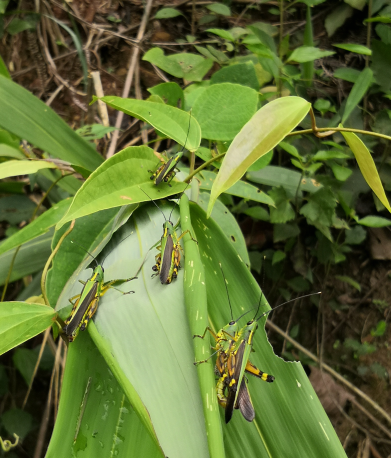
Plate 2. One evident yellow vertical line runs through the pronotum
of Ceracris kiangsu, and in the middle of the hind legs, there
are “herringbone” brown grooves. Photo: Chen Peng
Nymphs: detailed physical description
Their bodies are similar to adults but wingless and the nymph has a total of five instars: the first instar nymph is 9.5–11.0-mm long, light yellow, the top of the head protrudes like a triangle, the tip of the antennae is light yellow, the posterior edge of the pronotum does not protrude backward, and the wing buds are not obvious; the body length of the second instar is 10.8–15.2 mm. The body colour is yellow and the posterior edge of the pronotum is like that of the first instar nymph, the front and rear wing buds protrude backward and are indistinct to the eye; the body colour of the third to fifth instar is mostly yellow black; the body length of the third instar is 15.0–18.4 mm, the posterior edge of the pronotum extends backward slightly, the forewing bud is long and narrow, and the rear wing bud is triangular, purple and black; the fourth to fifth instars are emerald green. The fourth instar is 20.3–24.5-mm long, the wing bud’s front edge is slightly yellow, extending to the end of the second abdominal joint, the posterior edge of the pronotum extends significantly backward, covering most of the metathorax, the dorsal midline is yellow, and there is a black longitudinal line under the dorsal midline; the body length of the fifth instar is 28.5–30.8 mm, the front edge of the wing bud is yellow and extends to the third terminal joint at the abdomen.
Nymphs: key identifying characteristics
Eggs hatch into nymphs. Generally speaking, nymphs are grasshoppers that have not matured yet. Because the wings of the grasshopper are not fully developed, they can only jump and cannot fly (Plate 3). The nymph of Ceracris kiangsu can shed its cuticles five times in its life (i.e. the five instars). The empty shell of a locust on a branch is the “remains” left by the nymph after shedding. After shedding five times, their wings grow hard and they become adults. The difference between the first to second instar and third to fourth instar lies in the change of body colour: from the third instar, there are obvious longitudinal black bands on both sides of the pronotum, and the longitudinal yellow bands in the middle of the back are more obvious.
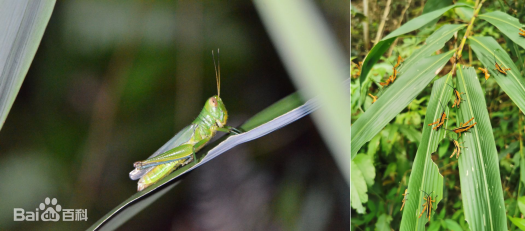
Plate 3. Nymphs of Ceracris kiangsu (body colour gradually changing from green to yellow). Photo: xxxx
Eggs: detailed physical description
Long elliptical, slightly pointed at the upper end and slightly curved in the middle. The egg has a vertical diameter of 6.2–8.5 mm, a horizontal diameter of 1.9–2.6 mm and is brownish yellow with honeycomb reticulation. The oocysts are cylindrical in shape, slightly thick at the lower end, with a long diameter of 18–30 mm and a short diameter of 6–8 mm. Colour-wise, they are drab.
An easy and effective control measure is to destroy the eggs of Ceracris kiangsu Tsai.
What is the life cycle of Ceracris kiangsu?
Figure 1 illustrates the life cycle of Ceracris kiangsu.
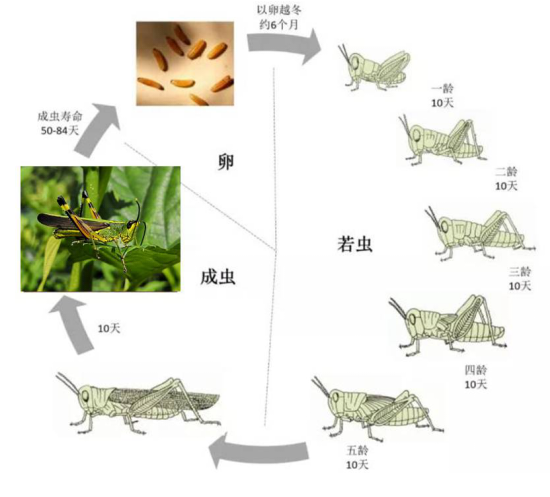
Figure 1. Life cycle of Ceracris kiangsu (adapted from the Kunming Information Port)
Like other locusts, Ceracris kiangsu is an incomplete metamorphosis insect, which can be categorized into egg, nymph and adult. It has one generation per year in all provinces (regions) of China. It overwinters for about six months in the egg sac at a depth of 1–2 cm in the soil. Its development period is closely related to the environment and temperature. The incubation period lasts for a long time in the forest.
In China, the overwintering eggs begin to hatch from the middle of April to the first ten days of June with a south-north gradient. As mentioned earlier, the nymphs are divided into five instars, with an average of ten days per instar. The average development phase of female and male nymphs is 57.17 and 55.96 days, respectively. The adults begin to form in early July, and emergence peak is 15 days later. Adults can copulate about ten days after emergence, but they need to feed for 20 days. Eggs are laid from late July to early August.
Has the bamboo locust occurred in China before?
The bamboo locust is a native insect species in China, widely distributed in the southern provinces, mainly south of the Qinling–Huaihe River (commonly understood as the border between North and South China) and neighbouring economies in the Greater Mekong Subregion. Jiangsu, Zhejiang, Hunan, Anhui, Sichuan, Chongqing, Guangdong, Guangxi, Yunnan and other provinces are the most severely affected. In Yunnan Province, Ceracris kiangsu was recorded during a pest survey in the 1980s. Therefore, the bamboo locust is not an invasive species.
How should Ceracris kiangsu, which is rampant in Yunnan, be approached in the specific Chinese context of upholding ecological security and building an “ecological civilization”?
These swarms of Ceracris kiangsu Tsai come from neighbouring economies and mainly destroy Yunnan’s bamboo forests. In 2018, 2019 and 2020, the bamboo locusts crossed the Lao PDR border to Jiangcheng County of Pu’er City and Mengla County of Xishuangbanna Prefecture in Yunnan Province for three consecutive years, especially in July 2020.
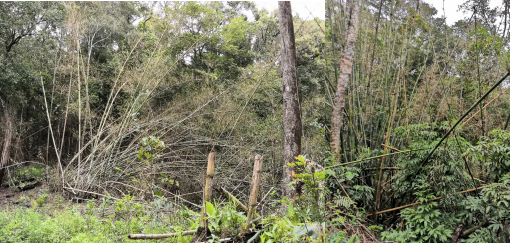
Plate 4. Bamboo destroyed by Ceracris kiangsu. Photo: Chen Peng
This time, however, the locust has become too destructive, not only causing serious economic losses, but also posing a serious threat to ecological security. Therefore, Ceracris kiangsu is considered a malicious “uninvited guest”, and while not an invasive species per se, does pose a threat through cross-border biological invasion. Years ago, General Secretary Xi Jinping gave Yunnan the role of becoming the pacesetter for the construction of an ecological civilization. Thus, Yunnan Province should maintain the status of “two kingdoms, one garden” (namely the animal kingdom and the plant kingdom harmoniously united in the “Chinese garden” also know as China, an important concept under the ecological civilization umbrella). Through the destruction of forests and farmland the locust is threatening to upset this fine balance. Therefore, the plague has to be controlled.
Why is the bamboo locust plague so severe this time?
The global climate is changing, resulting in a rise of temperature in the past year. Most of the overwintering eggs in the soil did not freeze to death, which greatly increased the base number of eggs hatching then. In addition, high temperatures and dry weather often occur in spring, including this one, which provide good environmental conditions for a locust outbreak. This is also the reason for the serious bamboo locust plague in Lao PDR this year. According to weather analysis, high temperatures and drought in Lao PDR in the spring of 2020 accelerated the hatching time of eggs, improved the survival rate of the hatching nymphs and advanced the migration and spreading time, which all contributed to the early invasion time and large population of Ceracris kiangsu in Lao PDR, from where it eventually migrated to Yunnan.
What are the preferences of Ceracris kiangsu?
1. The main food source is bamboo. The eating habit of the Ceracris kiangsu is relatively simple, aside from bamboo it also eats Chinese banana, tiger grass and so forth, but it can also damage crops, such as rice and corn when food is scarce. In Xishuangbanna and Pu’er where the bamboo locust plague occurs, it mainly feeds on bamboo, such as Dendrocalamus giganteus, Dendrocalamus membranaceus, Dendrocalamus brandisii, Dendrocalamus barbatus and Dendrocalamus sinicus. As Ceracris kiangsu is native to China and bamboo forests are generally vulnerable to foraging by this insect, it is rather the degree of predation that determines whether ecosystem health and by extension rural livelihoods will be affected. If they are negatively affected, control measures have to be implemented.
2. It likes urine. It may seem surprising that Ceracris kiangsu likes the smell of urine. Ammonia is the reason for the locust’s attraction to the substance. According to research by Chinese scientists, the shedding of the nymph’s cuticles consumes nitrogen, which is an element in ammonia. Especially the shedding of the fifth instar locust consumes a large amount of nitrogen, which is the main reason the locust is so attracted to urine. Research shows that fermented human urine can attract both nymphae and adults of Ceracris kiangsu. Generally, the locust is more likely to be attracted by human urine that has been fermenting for 30 days. Therefore, using fermented urine for trapping and killing the locust is one of the options to control the plague.
3. It likes crowding. This occurs in two forms; (i) when the population density is large, swarms of nymphs gather on plants to feed; (ii) before mating, adults often gather together in groups, and migrate from one place to another, so as to expand the population throughout the area rapidly; strong wind can increase the migration distance of the locust further, and with the aid of air flow, it can move up to 20 km at one time.
4. It likes a clean environment. Although Ceracris kiangsu can lay eggs in an entire bamboo forest, it prefers cleaner places. Chinese scientists have found that in areas where shrubs, weeds, lianas and ground litter are removed and fresh soil is exposed, the amount of eggs laid by adults of Ceracris kiangsu Tsai is double the number of those in uncut plots. Thus, refraining from removing litter can be beneficial for fighting the locust but may negatively impact accessibility.
Can we effectively control the bamboo locust?
The bamboo locust is not a new pest, and it is not difficult to control. Chinese scientists have already studied it in detail. As early as 2011, the “Technical Regulation for the Control of Ceracris kiangsu Tsai” (GBT 27645-2011) was formulated, and it can be used for guidance. At the same time, populations differ in different places, both in China and abroad. Although the behaviours of these different populations are essentially the same, there are some smaller differences, such as the egg-laying (oviposition) time, the hatching and when the nymphs shed their cuticles. These differences should also be taken into account when attempting to control the locust.
Under what circumstances should Ceracris kiangsu be controlled?
In the “Technical Regulation for the Control of Ceracris kiangsu Tsai”, the degrees of harm caused by the bamboo locust are classified into three levels based on the survey on nymphs in the fourth and fifth instars and adults:
· Slight damage: The damaged area of bamboo leaves is less than 1/3 (the bamboo forest is slightly discoloured from a distance);
· Moderate damage: The damaged area of bamboo leaves is 1/3–2/3 (the bamboo forest is withered yellow from a distance); and
· Severe damage: The damaged area of bamboo leaves is larger than 2/3 (the bamboo forest seems burned from a distance).
In on-the-ground surveys the damage level of Ceracris kiangsu can be classified according to the table below:
| Survey stage | Unit | Damage level | ||
| Slight | Moderate | Severe | ||
| Nymphs | Nymphs/m2 | 2–5 | 6–20 | More than 21 |
| Nymphs and adults | Nymphs & adults/plant | 5–15 | 16–30 | More than 31 |
The current outbreak in China is considered severe. The locusts consume large amounts of bamboo, spread quickly and cause serious damage. Therefore, they must be prevented and controlled. As such, Ceracris kiangsu needs to be controlled if it causes economic loss. Nymphs of the fourth to fifth instars and adults are the most likely to cause losses, but nymphae of first to third instars are easier to control because of their relatively weak resistance.
As a matter of fact, to ordinary farmers, if “the bamboo forest is withered yellow from a distance” or “the bamboo forest seems burned from a distance”, other crops will most likely also be damaged. Is it too late to prevent and control the plague at this stage? The withered and yellow bamboo forest means loss cannot be avoided. Therefore, Chinese scientists proposed principles for prevention and control of Ceracris kiangsu: prevention first, scientific prevention and control, governance according to law, and promotion of ecosystem health. We should control the bamboo locust as early as possible (to avoid economic losses before the damage is caused) and control the nymphae (because one can take advantage of their lower resistance to insecticides and they are easily killed; also when the population density is not large, it is time-saving and labour-saving to exact its control).
How can we monitor Ceracris kiangsu?
The focus is to carry out surveys on egg stages, nymphs and adults.
The egg-laying survey is based on the migration pattern of the bamboo locust; the best time is after egg laying from September to November every year. Generally, the egg-laying time of adults can be estimated according to the degree of damage of the bamboo. If the bamboo leaves in the lower layer of the bamboo forest where Ceracris kiangsu lays eggs are seriously damaged, this means that more locusts have moved up the upper layer branches and the overall larger population leads to a larger egg-laying density. Additionally, as the females die after egg laying, the amount of dead Ceracris kiangsu in the spawning place is an indicator for egg density as well. Most of the eggs of Ceracris kiangsu Tsai are found on sunny hillsides and forest land with moderate soil density. Through careful visual observation and investigation, egg laying range and population density can be determined.
Investigation on the nymph and the egg stages should begin in mid-April. The results have shown that nymphs of the first to second instar like to eat short bamboo branches and gramineous plants on the ground, while those beyond the third instar like to eat on the top tips of bamboo, which obviously damages the top shoots of bamboo. The larger the density of nymphs, the more serious the damage will be. When the damage is serious, the bamboo forest is yellow or appears burned, which is obviously different from the green of the surrounding healthy bamboo forest. According to the above symptoms, we investigated the distribution range, area and damage degree of the nymphs, and took effective measures to control it.
The migration of adult Ceracris kiangsu should be investigated from the early July to the last ten days of August. In general, the bamboo locusts do not migrate when they have enough food, only when they are hungry. Therefore, it is necessary to observe the bamboo forest within the areal range of the plague and judge the migration of adults from the bamboo forest form. When the bamboo is abnormal and the bamboo leaves decrease sharply, this basically confirms that the locust has moved in. Through investigation, patterns of occurrence and development, distribution range, area and damage degree of adult Ceracris kiangsu can be accurately estimated.
What strategies does Yunnan have in place to fight the bamboo locust?
Based on experts’ recommendations, the government has put forward strategies for the prevention and control of Ceracris kiangsu: Focus on the “control of immigration and spreading” in the local prevention and control of the locust, closely monitoring the insect and giving early warnings, fully mobilizing forest rangers and forest resource officials to participate in the monitoring and early warning work and establishing a pest-monitoring network at the provincial, municipal, county, township, village, group and public welfare forest official levels, so as to comprehensively and accurately assess the occurrence of Ceracris kiangsu, comprehensively screen plague hazards and ultimately win the battle against the pest through firm determination, powerful measures and efficient actions.
Meanwhile relevant information about bamboo locust plagues in neighbouring countries linked by mountains and rivers should be collected, and close attention to bamboo locust populations in foreign countries should be paid, so that new waves of “invasion” are prevented.
How can we control the bamboo locust?
This should be done through previously determined classification. According to the results of pest monitoring, Ceracris kiangsu is classified and controlled to ensure the safety of forest resources and food production, and early control on nymphs is emphasized.
In areas with severe invasions, unmanned aerial vehicle (UAV) and ground control, as well as chemical and biological control measures can be taken to quickly reduce the pest populations, followed up by more moderate biological control methods. Biological control is the main method in areas with moderate occurrence. In areas with mild occurrence, monitoring should be strengthened, and attention should be paid to quantitative changes of the locust populations at any time. Necessary preventive measures such as physical control, chemical control and biological control should be taken to prevent the spread of the pests.
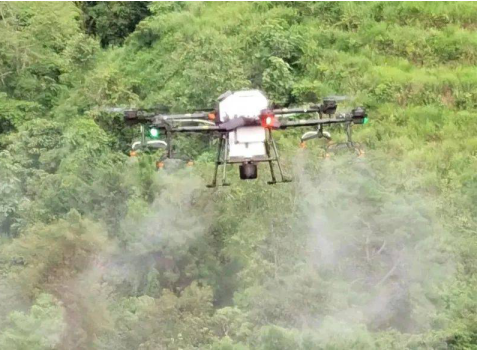
Plate 5. The Pu’er City Municipal Forestry and Grassland Bureau conductsUAV control.
Photo: Pu’er City Municipal Forestry and Grassland Bureau
What are the specific measures to control Ceracris kiangsu?
Artificial control
Determine the location and scope of egg-laying sites and organize manual excavation of the Ceracris kiangsu Tsai eggs for destruction, or mark them, and regularly monitor them; before the end of March collaborate with bamboo forest tending or dig out eggs for centralized treatment; from the middle of April to the end of June, use chemicals to control the emergence of nymphs. The egg-laying area and range can be determined according to the following characteristics:
§ Generally where Epicauta ruficeps (a Ceracris kiangsu egg-eating beetle, Plate 6) appears, bamboo locust eggs are likely to be found; also the leaves of bamboo shoots are seriously damaged generally;
§ Eggs may exist in places where bamboo and weeds are seriously damaged on the ground;
§ In the egg-laying areas, there are often remains of bamboo locust adults, such as the head capsule, the pronotum, wings and hind feet; and
§ At the upper end of the egg, there is a black egg cap with a gelatinous sclerosis, which is round and concave.
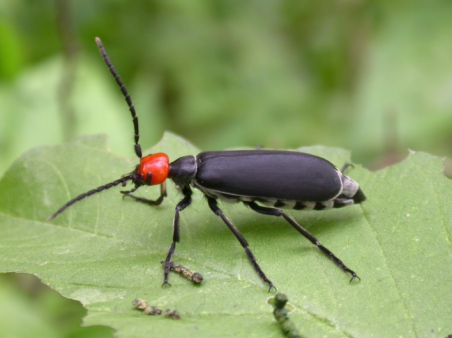
Plate 6. Epicauta ruficeps eating Ceracris kiangsu eggs
Liquid trapping
Attraction and killing is a good method for bamboo locust control. Based on the locust’s fondness for urine, small pits with a diameter of about 20 cm can be dug every 5–8 metres along a plank road or mountain road between the time when the nymphs hop onto the bamboo tree and before the adults lay eggs. They should be padded with plastic film and about 150 ml of urine mixed with dipterex or trichlorphon should be poured into them; or a bamboo trough containing 150 ml of the above-mentioned liquid should be placed every 5–8 m, and the liquid should be changed every two to three days on sunny days. The recommended ratio of urine to insecticide is 20:1, and the ratio of urine to trichlorfon is 100:2.
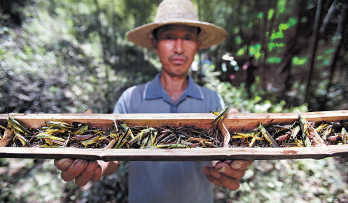
Plate 7. Bamboo locust control staff member from Taojiang County, Hunan Province
shows the insects trapped in the urine-trapping device. Photo: Hunan Channel
However, it is important to not simply use urine to lure and kill Ceracris kiangsu. In order to trap and kill it with urine, it is necessary to ferment the urine in advance. In fact, anything that can contains ammonium, which produces the smell of urine, can be used to trap and kill the locust, such as ammonium carbonate and ammonium bicarbonate solutions. Some studies have shown that a mixed solution of 2 percent salt + 10 percent ammonium bicarbonate + 5 percent indole (a common nitrogenous chemical substance), or 2 percent salt + 10 percent ammonium bicarbonate solution, are great attractions for Ceracris kiangsu. It is important to remember when attempting to trap and kill the bamboo locust that insecticides need to be added (see above). It should be noted that dry ammonium bicarbonate is avoided by the locust, so some water should be added.
The people of ancient China had their own ways of dealing with the locust: In the Book of Songs, a poem says “lure insects with bonfire and then kill them”, which shows the people’s hatred for the locust plague. In ancient times, there was a “bonfire trapping method” for locusts: when it was getting dark at dusk, a campfire was lit to attract a large number of locusts, and then people took the opportunity to kill them. However, fire in the field can easily cause forest fires, thus it is no longer recommended as a trapping method.
Fumigation
If Ceracris kiangsu swarms in areas where transportation is difficult, hillsides are steep, forest is dense or sheer distance from civilization makes it difficult to control the insects, a smoke machine can be used. The control time should be in the early morning or evening when there is no wind in order to fully disperse the smoke in the forest. For example, with dosage of 750 ml/ha of the matrine smoke agent for control of bamboo locust adults, the control effect can reach more than 90 percent of the population after two days of fumigation.
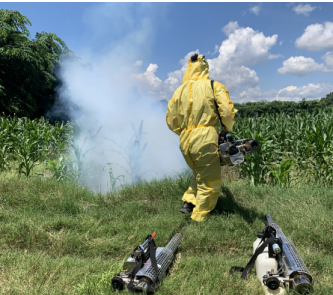
Plate 8. Jinghong City carries out a locust plague fumigation drill.
Photo: Website of Jinghong Municipal People’s Government
Injection in bamboo cavities
This method is suitable for bamboo forests where pesticides or other control measures cannot be used over large areas, such as scenic spots with frequent human activities. A small hole is drilled with an electric drill from the base of the standing bamboo to the top of the first bamboo node, then 20 mm of 18 percent insecticidal agent is injected into the bamboo cavity along the hole with a syringe and the hole is sealed with soil. Because of the transpiration of plants, the chemicals in bamboo cavity will be transported to the bamboo crown through the conducting tissue in the plant, causing the death of any locust eating the bamboo leaves.
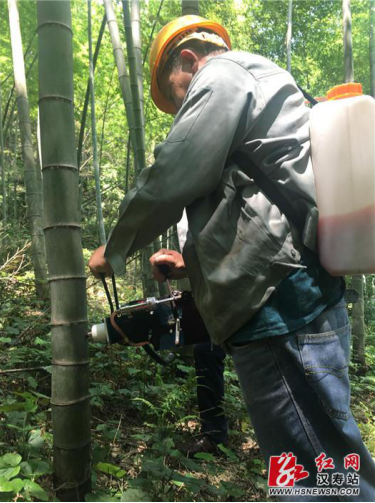
Plate 9. A Ceracris kiangsu Tsai control staff member from Hanshou County,
Hunan Province injects a chemical agent into the bamboo cavity to control nymphs. Photo: Hunan Channel
Mist and powder spraying
The chemical control method is best for the newly hatched nymphs at the egg-laying site. During this period, spraying powder to control the bamboo locust can have twice the effect using half the effort, as the nymphs are relatively concentrated in a small area. The specific method is to spray imidacloprid or dimehypo using a mist and powder spraying machine on the egg-laying site before the nymphs hop onto the bamboo. Spraying the insecticide should be carried out in batches. Each egg field should be sprayed with powder every four to five days from the date of hatching, and generally three times is enough.
For example, 2 percent thuricide fipronil of 6.7 ml/ha has a significant effect on the nymphs, and controls the populations for longer period, and can control more than 96 percent of the population. It does not harm Epicauta ruficeps, the beetle which is an important natural enemy of Ceracris kiangsu. Otherwise use the pesticide diluted with water at 1:4,000 to reach a control effect of 95 percent.
Biological control
The natural enemies of Ceracris kiangsu are mainly Telenomus spp, Tachina, Epicauta ruficeps, ants, spiders, mantis, bamboo partridges and so on. They play an important role in controlling the population of locusts. In order to control the pest, alder and Paulownia can be planted on the edge of the forest to attract Epicauta ruficeps, and the broad-leaved trees in the Moso bamboo forest can be retained during tending to maintain biodiversity in the forest, and create a suitable environment for the habitat and reproduction of the locust’s natural enemies, so as to control its spread.
Both Beauveria bassiana and Metarhizium anisopliae (bio-insecticides) have the advantage of easy use, being safe for humans and livestock, and cause no environmental pollution when used to control the bamboo locust. From April to May every year, during the initial incubation period, Beauveria bassiana powder is used to control the pest. In general, the dosage is 30–60 kg/ha in a mildly affected area, and 75–150 kg/ha in moderately affected areas. When the Beauveria bassiana powder is applied, the temperature should be 20–25℃, and relative humidity should be 80–90 percent or higher. The effect is better if the power is applied after rain.
Can Ceracris kiangsu Tsai be eradicated?
We also have Ceracris kiangsu Tsai native populations. Most years, the number of bamboo locusts in Yunnan is not large, and they eat little food, so the damage is very little. It is a naturally occurring species. All kinds of species are important for ecosystem functioning, including insects. Ceracris kiangsu is part of these ecosystems and should be tolerated by humans if the damage to bamboo and crops is moderate. After all, humans have enjoyed so many resources, and other creatures have rights to natural resources as well. This is an important part of maintaining biodiversity and ecological balance, which is still very important for the ecological security of China. As the saying goes, you have, I have, and everyone has; you eat, I eat, and everyone eats.
What can we do?
At present, the Government of the People’s Republic of China is organizing human and material resources to carry out the prevention and control of the bamboo locust in a bid to resolutely fight and win the battle against the current Ceracris kiangsu outbreak. This, however, requires the cooperation of local people and support of the government’s prevention and control work. Local people can discover and report local outbreaks, so that the government can organize the prevention and execute control measures in time; guard the homeland, and support prevention and control measures.
For any questions about any of these measures mentioned, please contact local forestry stations or relevant Forestry and Grassland Bureaus;
For technical questions, please contact the Yunnan Academy of Forestry and Grassland.
Tel: 0871-65211397, Email: slbhyjs@126.com
Address: No.2, lan'an Road, Panlong District, Kunming City, Yunnan Province Tel: 0871-65150418
Copyright (c) 2017-2019 Yunnan Academy of forestry and grassland Sciences record No.: Dian ICP Bei 14002083 public security organ record No.: 53010302000458
